Polska
How much dark and depressing eastern European history can a person take? Seriously, over the last hundred years or so the people of countries like Belarus, Ukraine, Estonia, Latvia, Lithuania and Poland, just to mention a few, have been invaded, subjugated, divided, raped and pillaged, cities flattened, minorities rounded up and killed, entire economies absolutely decimated. It might be the Bolsheviks, the Nazis or the Communists, depending on the moment in time but sheesh, its been tough. Our road to and through Poland was littered with stark reminders of the horror of war and
oppression.
Vilnius, the lovely capital of Lithuania, has seen more than its fair share of invasion, suppression and death. But today’s ‘old town’, largely rebuilt in the last 30 years or so, still rings true to its origins, that of a powerhouse city of the middle ages and a trading and educational centre thereafter. Julie and I explored its bell tower, cathedral and palace, all recently reconstructed, and climbed up the cobblestone road to Gediminas Castle Tower, part of what was a 15th century castle protecting the town during its heyday. We also wandered through the old town and the university area, enjoying the relaxed atmosphere and historical significance of the place.
We ventured out to the historic town of Trakai and followed the walking bridge out to the impressive 14th century castle that dominates a little island in the middle of Lake Galve. Also recently recreated but nevertheless an impressive and imposing structure for the various rulers of the land 700 years ago, the castle is a strong reminder to Lithuanians that at one stage their land and influence spread far beyond their current borders.

We love these old castles and fortresses, even if they are recreated from the original which would have been over 700 years old
We then ventured southward towards the Belarus border to an odd place called Grutas Park. This park is set amongst tall pine trees in a peaceful location but features statues of former Soviet leaders and a collection of propaganda, news, photos and other collectibles all displayed to mock and denigrate Lithuania’s former overseers.

Grutas Park uniquely hosts many old statues and propaganda paraphernalia from the bad old days of the Soviet Union
The park basically exposes and denounces the leaders like Marx, Lenin and Stalin (and dozens of others) with a collection of their statues that have been angrily toppled in Lithuanian cities and tells the story of how Marxism and the Bolshevik movement lead by Lenin and Stalin played such a devastating role to the people of the country. It’s a strange place, to be sure, with staff dressed as Soviet youth movement members and – we read but did not experience – Soviet marching and patriotic music played over the loudspeakers. A fascinating look at history from a different perspective but don’t go there for a laugh.
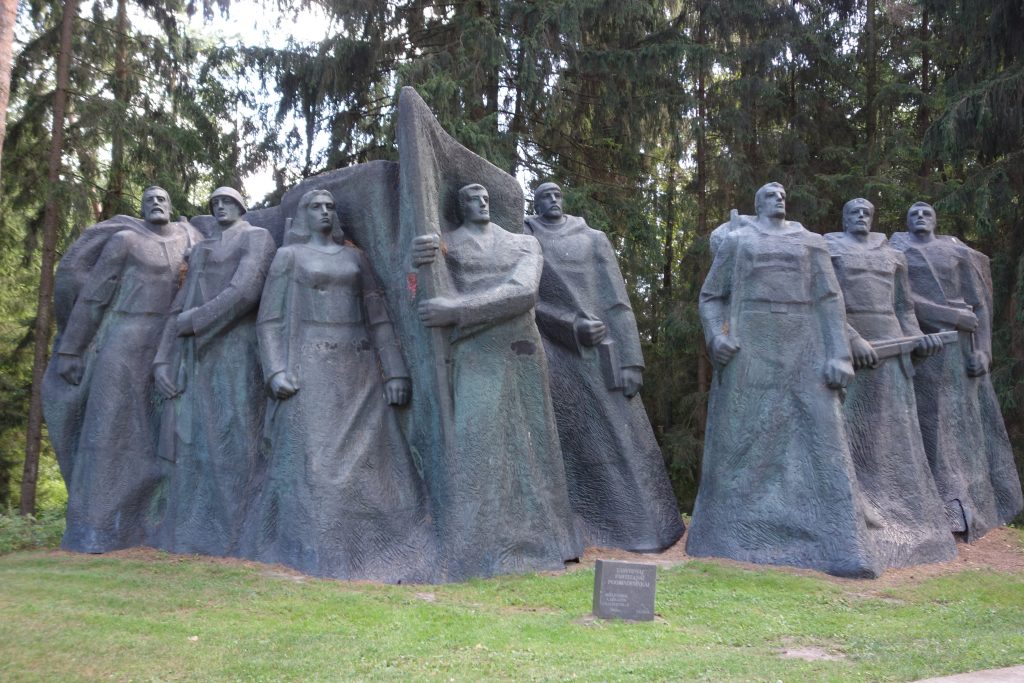
Another inspiring Soviet statue knocked down in some city and relocated to Grutas Park for everyone to mock
We entered Poland the next day after a lovely night camping on a lake near the border, knowing that any grim story we had heard in the Baltics will be amplified in Poland. But not so fast, the drive through northern Poland to their thriving capital of Warsaw was gorgeous. The city names were even more unpronounceable than before and the drivers were more like those in Colombia than Norway. The rolling farmland with the hay and grains being cut by giant tractors gave a feeling of agricultural prosperity and it showed in the tidy farm houses and quaint little towns. Poland gave the first impression of being very likeable.
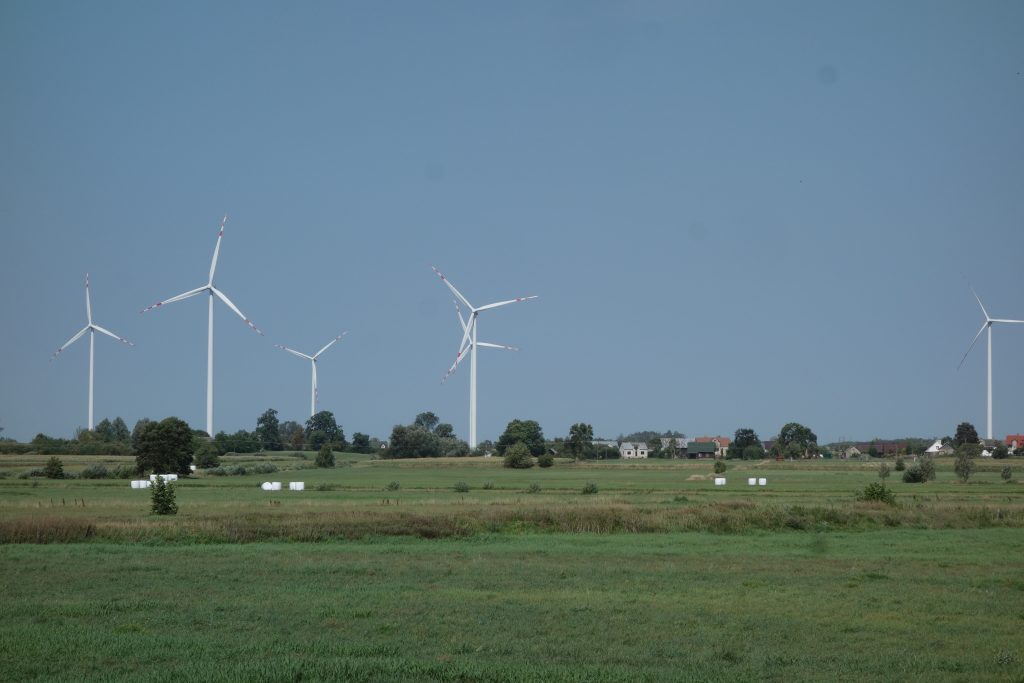
Wind turbines have been a feature in many places we’ve visited and we saw them again extensively in northern Poland
Warsaw is a city of almost two million people, the capital and economic centre of the country but one with a tragic past. After being overrun by the Nazis in 1939 and totally flattened as they left in 1945 Warsaw has had to pick itself up and rebuild its city. This is a country that lost six million people in the war, about 20% of their population, and all of their infrastructure had been completely ruined. But with international funds and a plucky attitude the Poles rebuilt their cities, including their historic capital, and today Warsaw is a vibrant and attractive metropolis.
Before going into town Julie and I spent the morning at a local caravan service centre getting some wiring fixed in Tramp to deal with our house batteries that weren’t holding a charge. The manager of the shop was up for a challenge and the two young guys replaced some wiring and plugs to make us European compatible. It was amazing that once again we found friendly people willing to go out of their way to help us as we passed through town.
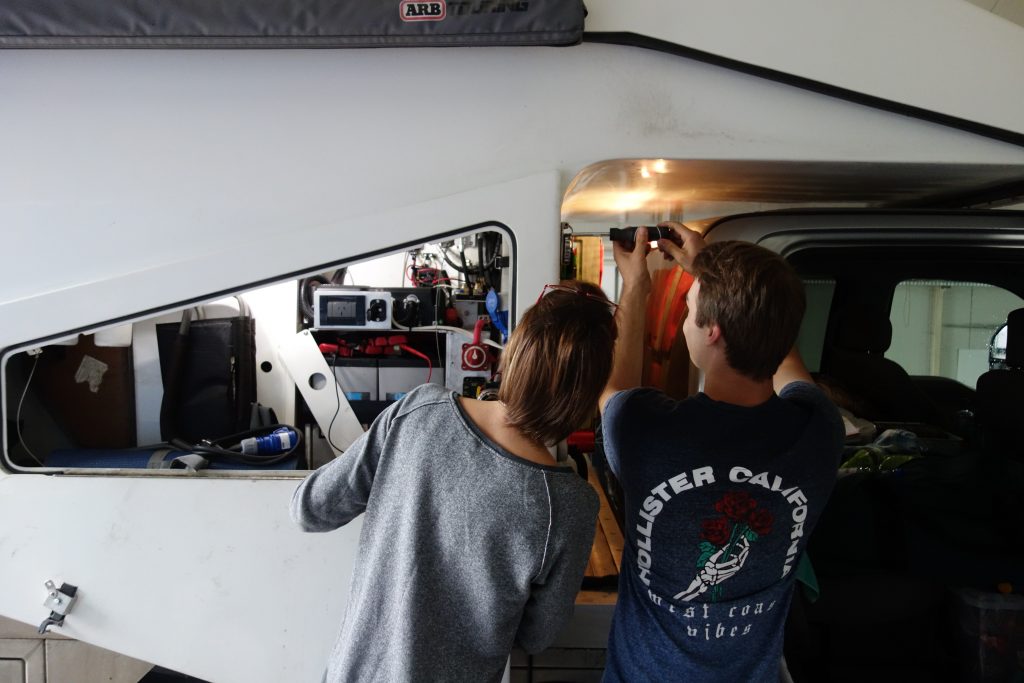
The manager of this caravan service centre had her two young guys change our electrical system so it would be compatible with European campsites
Warsaw’s ‘old’ town has been faithfully rebuilt based on original designs and their market square, churches, palace and city walls all look surprisingly authentic and, well, a bit old. Julie and I enjoyed our afternoon walking the old town of Warsaw, taking in the sights and lapping up the crowded atmosphere. The impressive rebuilding of Warsaw’s old town and their historic buildings was a tribute to their proud history and an ‘up yours’ to their oppressors. On ya, guys!
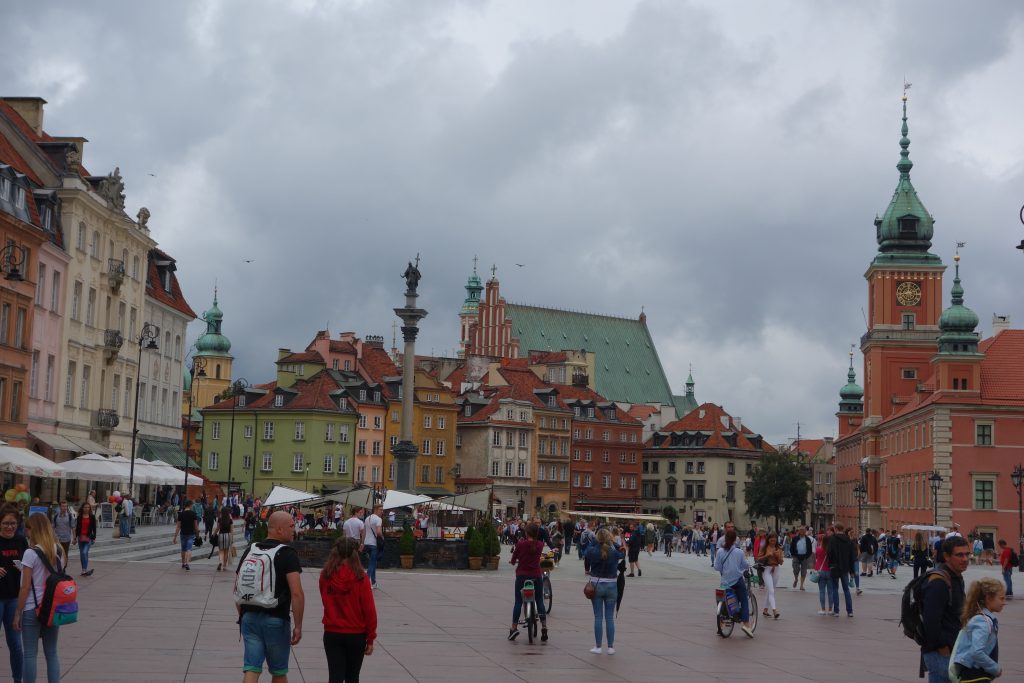
The old town of Warsaw looked a treat and we had a great time exploring the open square, palace and back streets
Our drive into southern Poland was an absolute delight – orchards of apples and pears, rich fields of grain, tall stands of corn, large pockets of thick tall forests and communities which clearly have benefited from the country’s rural prosperity. We were gaining a keen appreciation of how these hard hit but hard working people were getting on with life.
But the strongest and most poignant reminder of man’s travesty to man is also on Polish soil – Auschwitz, or to be exact, the Auschwitz-Birkenau Memorial and Museum. We pulled into the complex in late afternoon and were immediately overwhelmed by the huge crowds. People from all over the world were queuing to pay their respects and gain a better understanding of this most extreme of atrocities.
Auschwitz is the largest and perhaps the most famous – or infamous – of all the Nazi concentration camps. Between 1941 and 1945 over one million people, most of them Jews, lost their lives through starvation, execution or the gas chamber. Walking through the grounds of the camp and visiting a few of the different buildings which now house graphic displays of what occurred behind their barbed-wire lines was a terribly sobering experience. We finished the visit with a walk through the actual gas chambers, desperately trying to comprehend the incomprehensible.
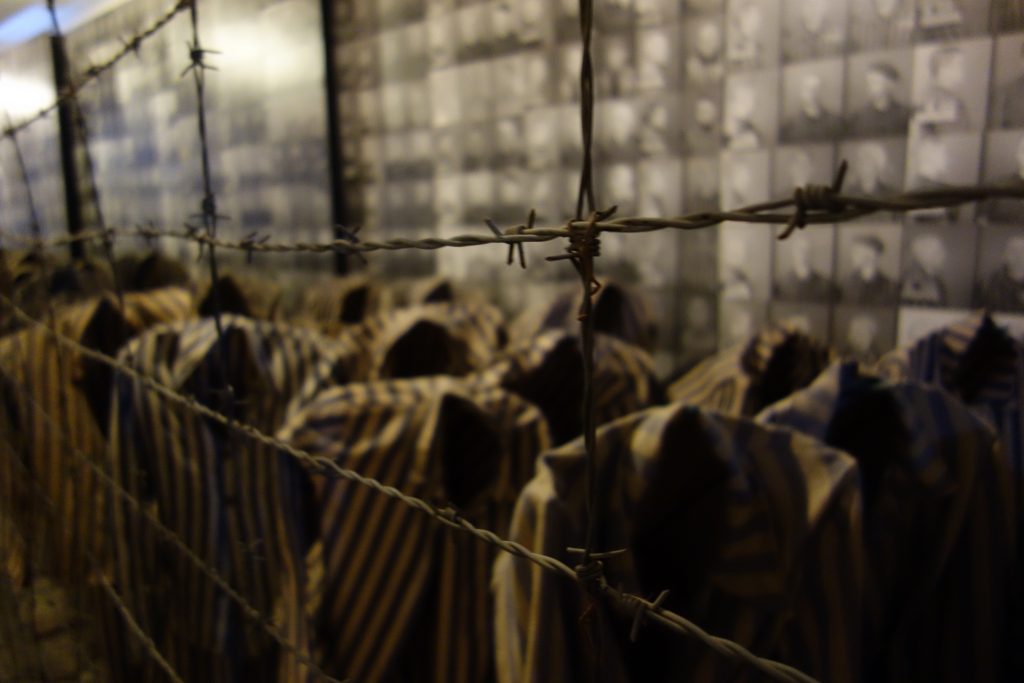
The details of what happened at Auschwitz and other concentration camps are chilling but these sites are preserved to remind us
By the time we finished it was late and we camped that night in the carpark of the Auschwitz memorial, looking across the street and through the barbed-wire fences to the former concentration camp. After 400 campsites you think you might have done it all but it turns out there’s always something different.
Our next maintenance project was to have Tramp’s oil and filter changed. We applied our well-proven trick of pulling up in front of the local Ford dealer, telling our story, begging for mercy, gathering a crowd of admiring onlookers, and finally people agreeing to help us despite the unscheduled hassle we present them. And once again it worked perfectly, they offered to drive across town and pick up a compatible oil filter they didn’t have in stock and change the oil while we went into the old town of Krakow for a bit of sightseeing. We love these travelling angels we meet along the way.
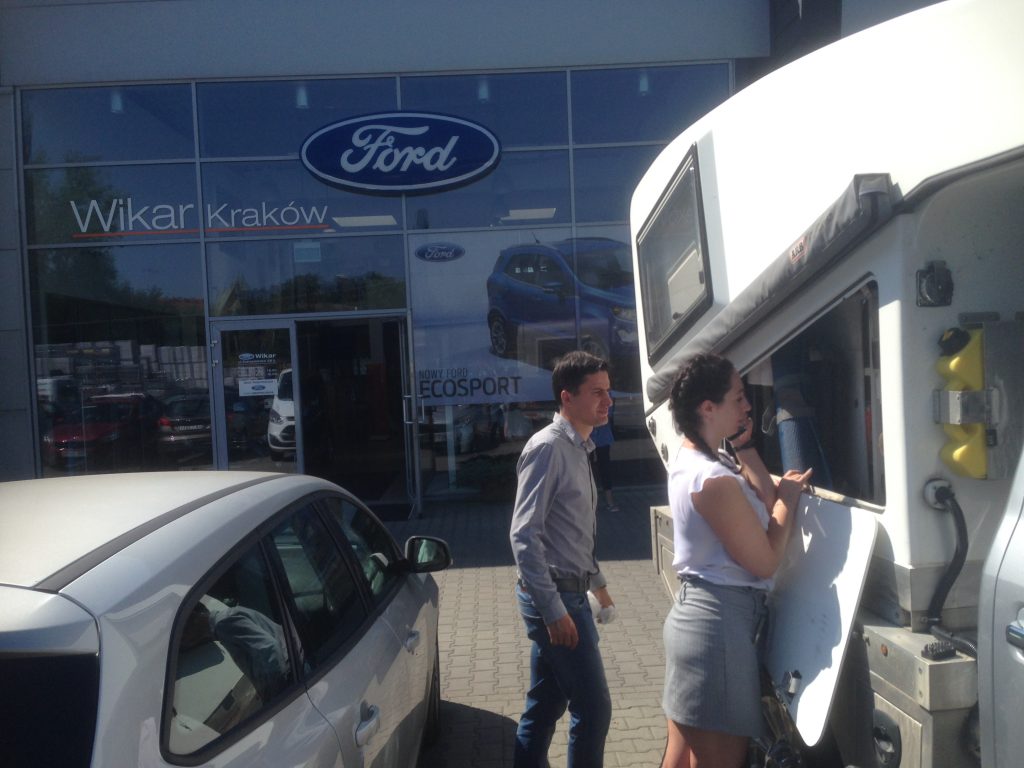
More random people willing to help us – in this case, Magdalena from the Krakow Ford dealer sourced a replacement oil filter, went across town to get it and then organised to get the oil and filter changed
Krakow is a dazzling city preserving its glorious past, largely undamaged in WWII, a magnificent medieval castle and cathedral overlooking the town, well-preserved market square, basilica and all the rest. In melting heat amongst the wilting masses we explored the castle and cathedral, then dropped down into the old town and walked along the old cobblestone streets, hit the impressive Cloth Hall which was the centre of Krakow’s medieval clothing trade and St. Mary’s Basilica with its spectacular wood-carved alter piece. We loved Krakow.
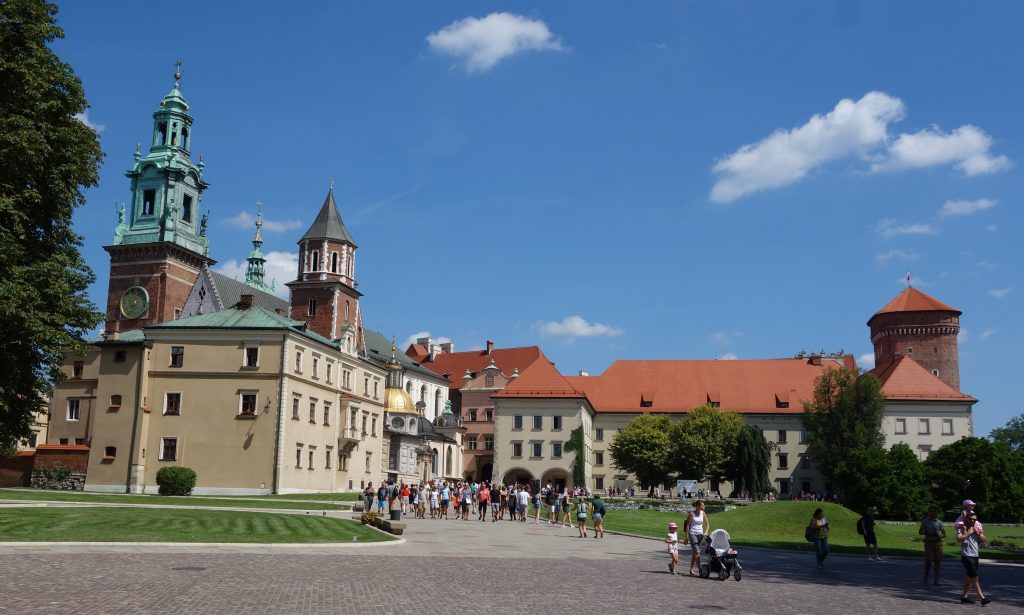
We walked up the rampart to explore the inside of the Krakow castle, including the impressive church and palace
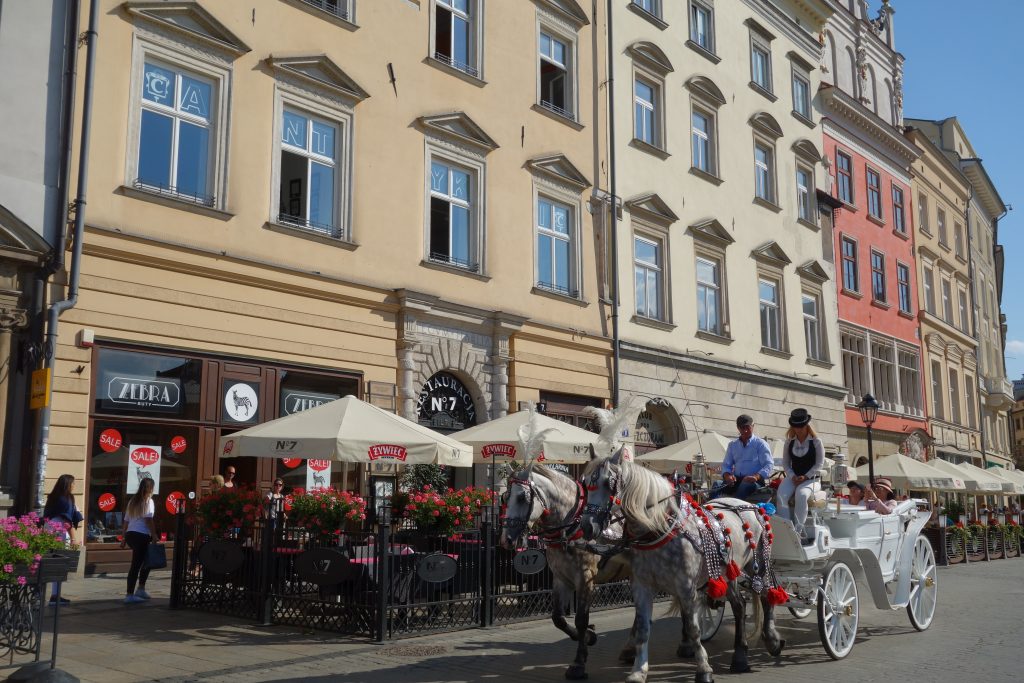
What is there not to like about Krakow – great history, preserved old town, great buildings, restaurants and horse-drawn carriages
The next day, sadly our last in Poland, we made an early start for the Wieliczka salt mine. This World Heritage site shows another side of Poland, the discovery of salt over 700 years ago, the extensive mining of it over the centuries, the wealth it brought to successive Polish kingdoms and the conversion from a salt mine to a world class tourist attraction today.
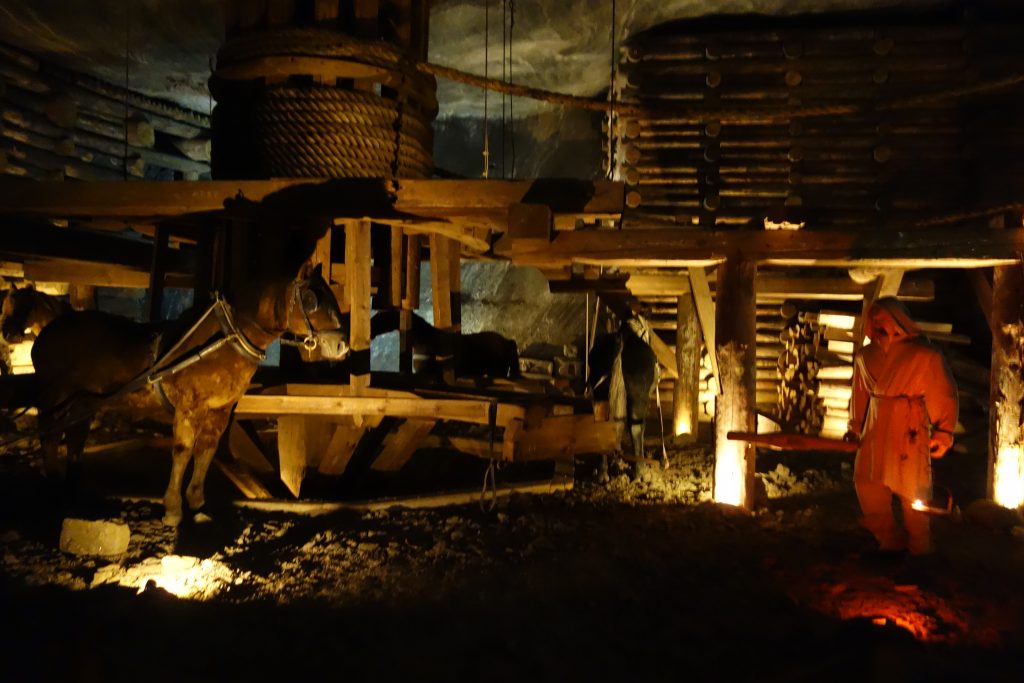
Not great photos from the salt mine but a few of the recreated scenes from the mine workers were quite good – including the horses that lived their whole life underground
As part of the tour we descended 135 metres (440 feet) deep into the Carpathian Mountains and explored about 3 kilometres of the 300 kilometres of tunnels that criss-cross through the mountains. We walked through tunnels that were originally built up to 300 years ago, many of them with the original timber braces used for support that have since absorbed the salt and turned almost to stone.
We heard amazing stories of how the early miners used hand tools to carve out the salt rock and then carry it to the surface, how horses lived their whole lives underground working for the miners, the death, the hardships, the wealth that salt – or white gold as they called it – brought to the country. It was a fabulous story deeply imbedded in Polish history but now, as the guide admitted, they no longer mine salt because the 10,000 tourists a day that go through the tunnels is far more lucrative. Yeah, we could see that.
We crossed over the Tartas range and passed into Slovakia after a fabulous five days in Poland. We saw only a small part of what this country had to offer but we got a good taste for the rich land, friendly people, tragic history and…the salt. A big thumbs up to Poland!
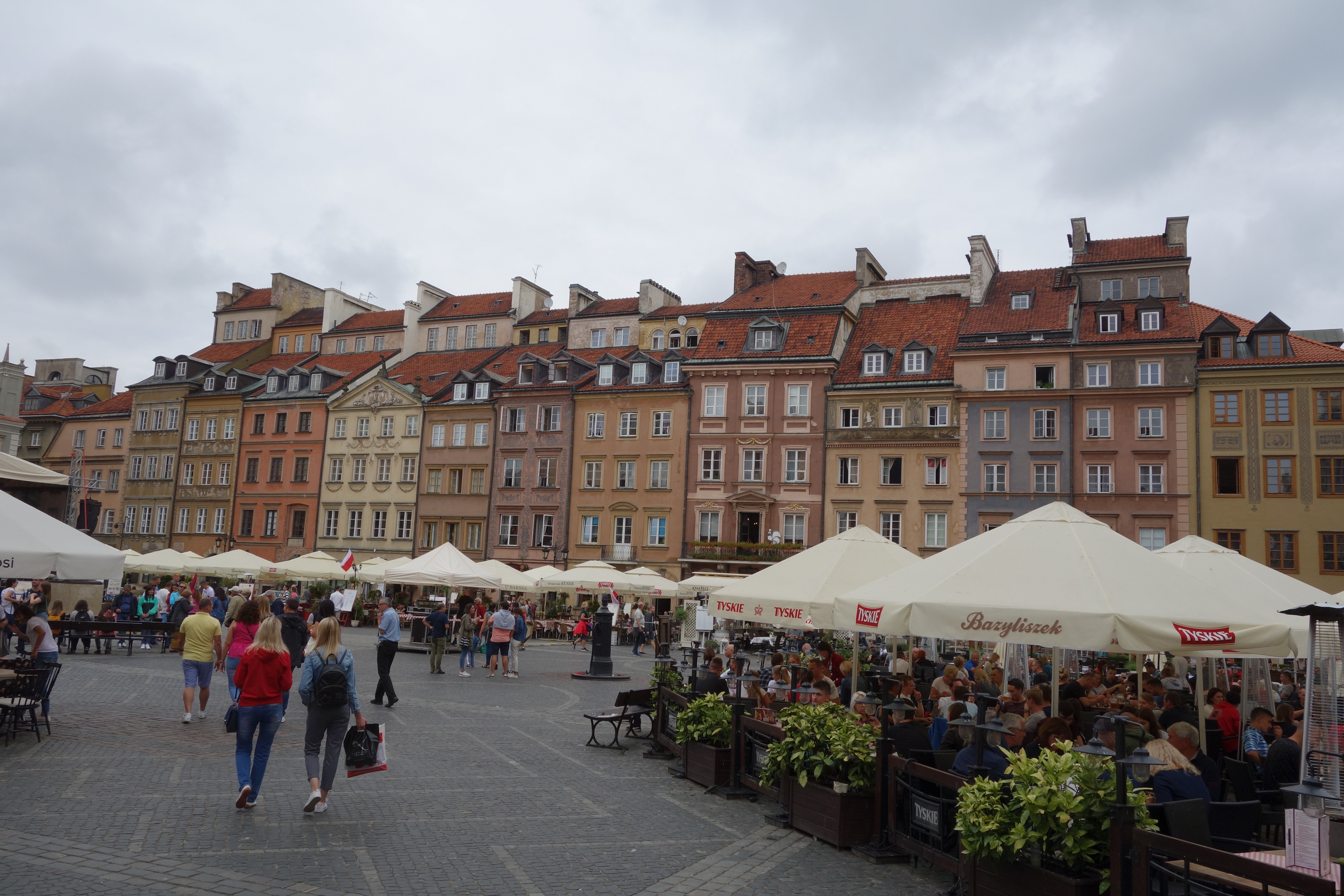



















Comments
Polska — No Comments
HTML tags allowed in your comment: <a href="" title=""> <abbr title=""> <acronym title=""> <b> <blockquote cite=""> <cite> <code> <del datetime=""> <em> <i> <q cite=""> <s> <strike> <strong>